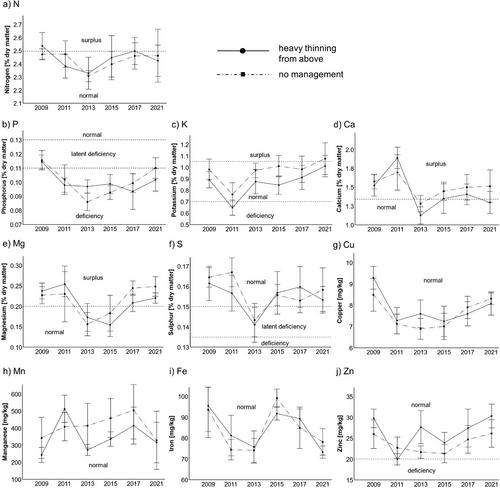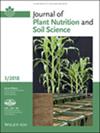Long-term assessment of macro- and micronutrients in foliage of European beech (Fagus sylvatica L.) in thinned versus unmanaged old-growth stands
Abstract
Background
Science-based decisions regarding forest management require the knowledge of the impact of thinning regimens on the forests’ vitality and resilience. There is no systematic study analysing the role of forest management approaches on the nutritional status of forests, serving as a surrogate for their health and growth.
Aims
We assessed the impact of ‘heavy thinning from above’ versus ‘no management’ on the foliar chemistry of old-growth European beech stands on a calcareous site with cambisol/chromic luvisol soil in Thuringia, Germany.
Methods
Macro- and micronutrients were analysed by serial foliar analysis of six trees per experimental plot over 13 years (2009–2021). To assess potential differences of foliar chemistry between the two plots and over time, a linear mixed-effects model was applied.
Results
Foliar concentrations of all macro- and micronutrients were not significantly different between the two plots (p > 0.05), demonstrating that the management approach had no relevant impact on the nutritional status of beech trees growing at the calcareous site. Furthermore, all foliar concentrations were dynamic over the 13-year evaluation period. Hence, long-term forest monitoring is crucial to capture the complex interplay between the trees and environmental conditions.
Conclusions
Serial foliar analysis allows for a reliable evaluation of a forest's nutritional status. The results indicate that either regimen, that is, ‘heavy thinning from above’ or ‘no management’, shall not pose any risk in terms of growth and stability. Our results add to the understanding of beech forest dynamics and may provide a further piece for science-based strategies of sustainable forest management.


 求助内容:
求助内容: 应助结果提醒方式:
应助结果提醒方式:


